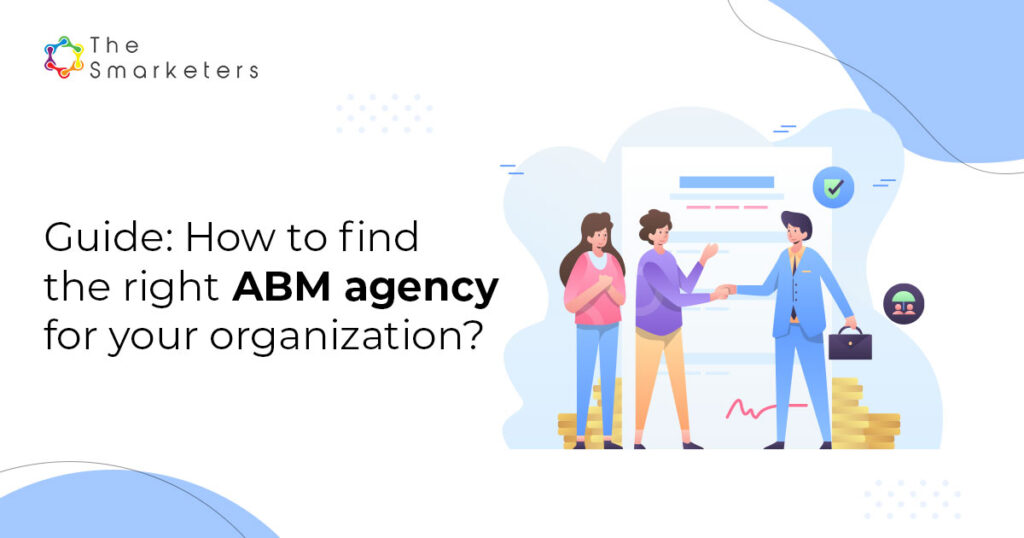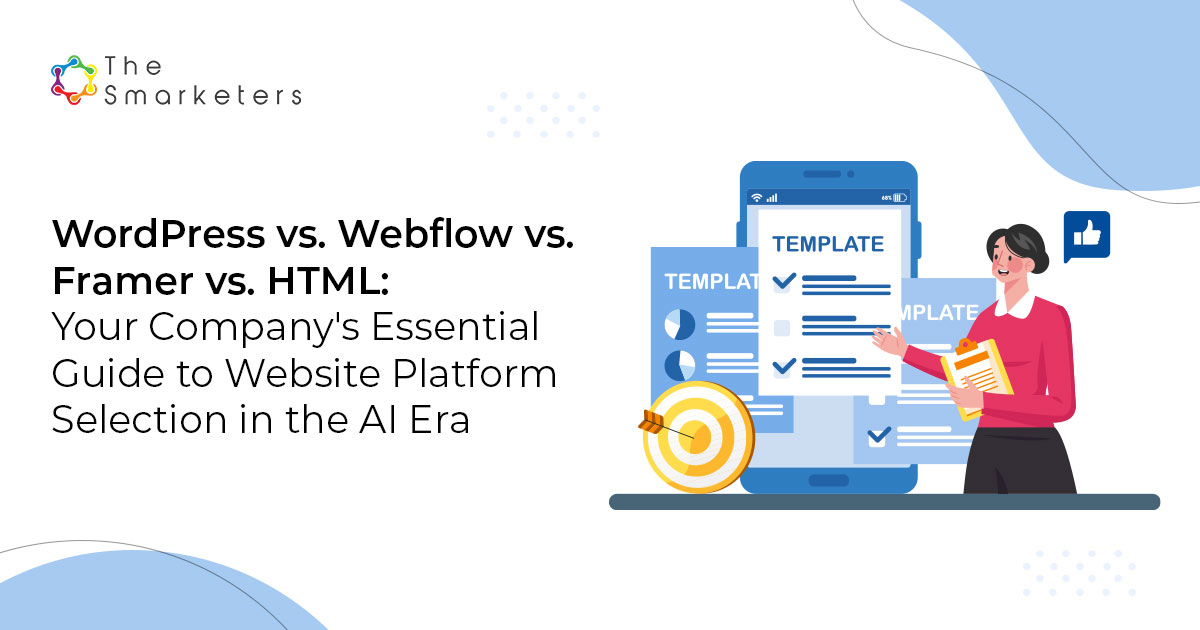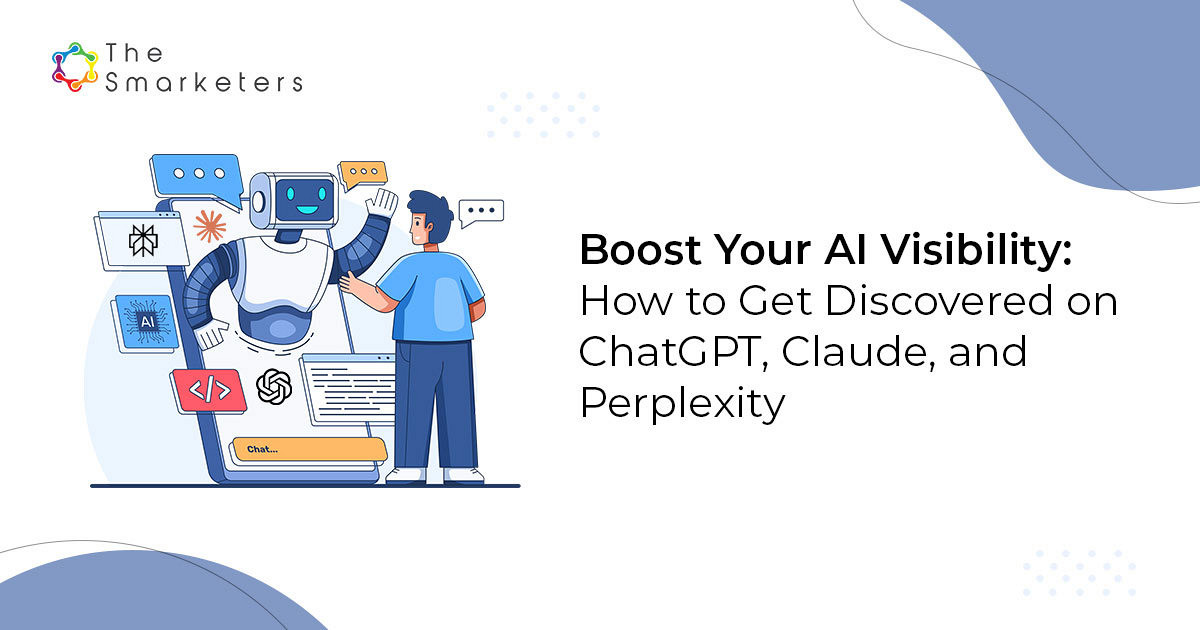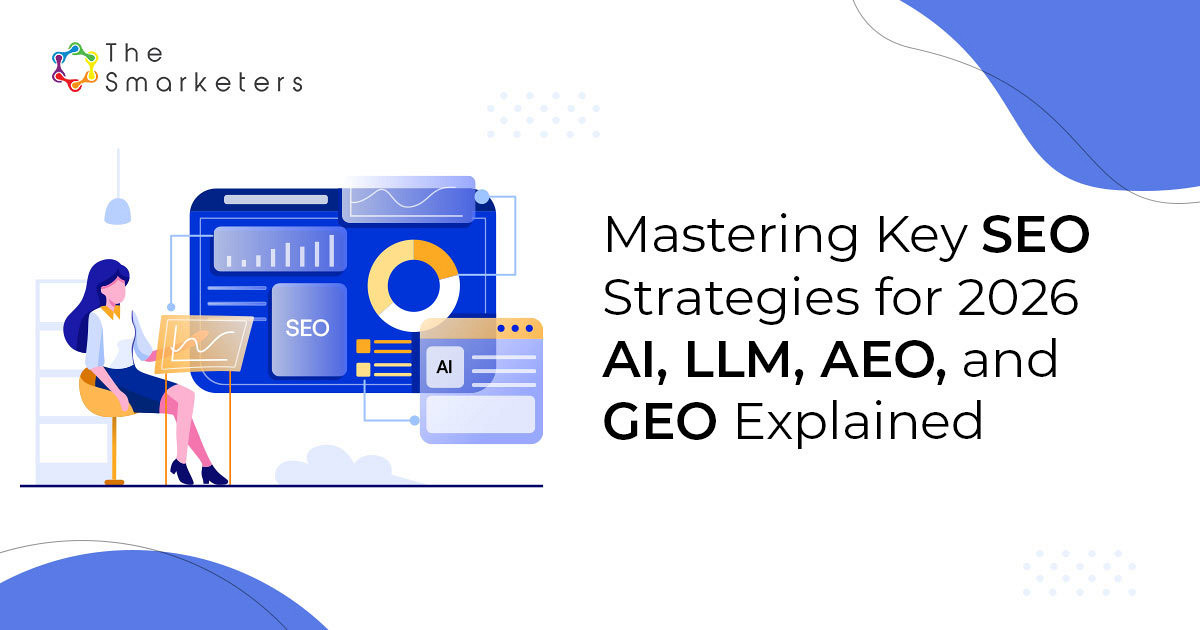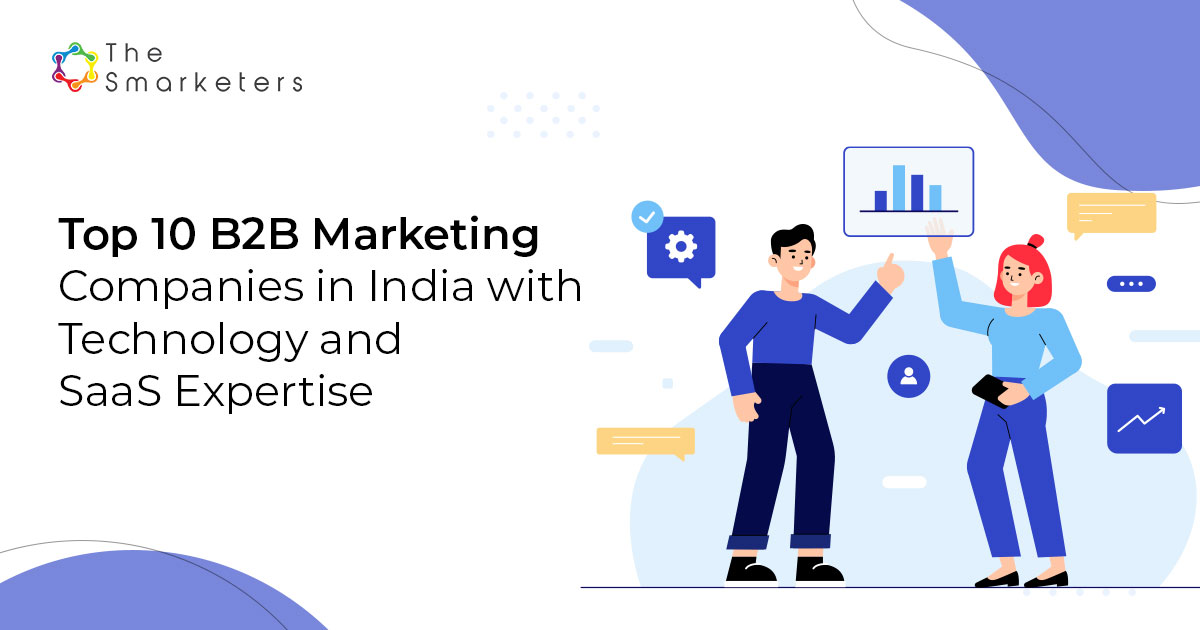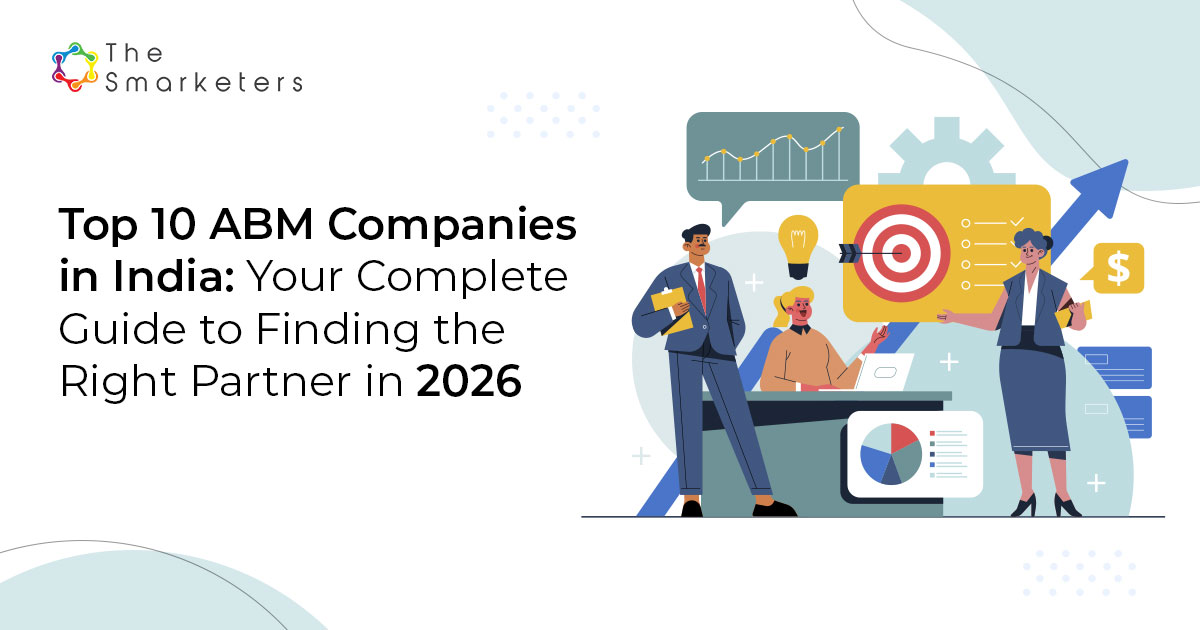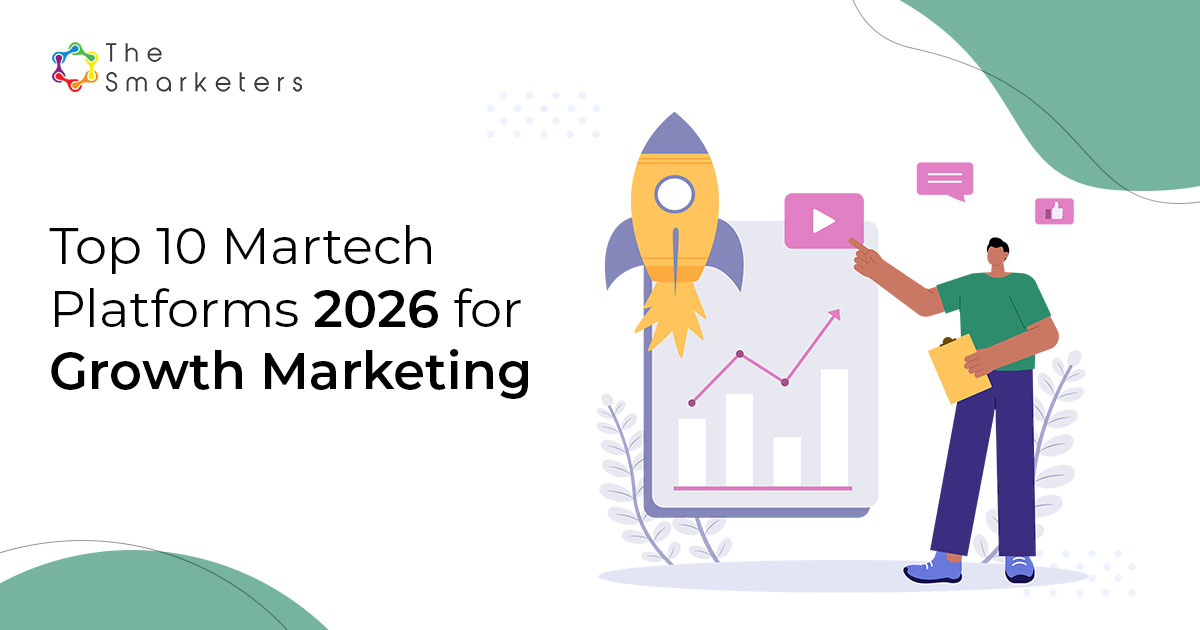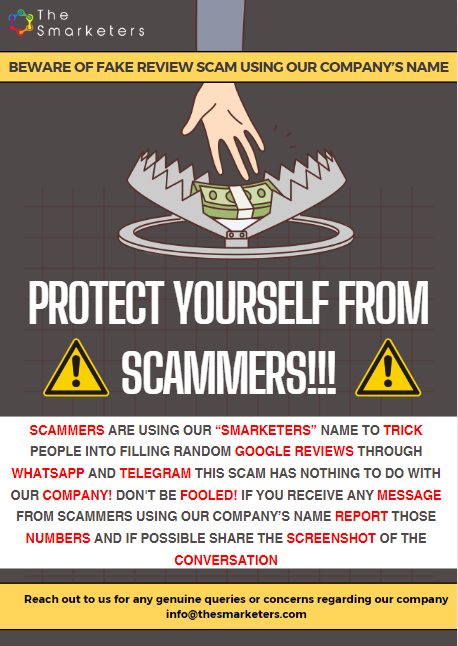Table of Contents
- Introduction
- Why Does Your Organization Need an ABM Agency?
- What Are the Key Criteria for Selecting an ABM Agency?
- How to Evaluate ABM Agencies for B2B SaaS Marketing?
- ABM Technology Platform Integration: What to Expect in 2026?
- Introducing the 2026 ABM Toolkit
- The Step-by-Step Process for ABM Agency Evaluation
- Key Metrics to Measure ABM Agency Success
- Common Mistakes to Avoid When Choosing an ABM Agency
- Your ABM Agency Selection Checklist (Quick Reference)
- Ready to Begin Your ABM Journey with the Right Agency?
- Top 10 B2B Marketing Companies in India with Technology and SaaS Expertise
- Top 10 ABM Companies in India: Your Complete Guide to Finding the Right Partner in 2026
- Top 10 Martech Platforms 2026 for Growth Marketing
- 2026 Marketing Guide: Integrating AI, MarTech Tools, and Smart Automations
- The Marketing Evolution: Loop Marketing vs Vibe Marketing vs Traditional Marketing Strategies for Maximum ROI
Introduction
Every click and conversion counts when it comes to sustaining growth and scaling your presence in today’s market. Amid this shift toward precision and impact, account-based marketing (ABM) has evolved into a revenue engine powered by AI, automation, and data unification. Generative AI, predictive analytics, and multi-channel orchestration now enable hyper-personalized campaigns at scale, transforming ABM into a fully operational, revenue-driven framework. While most organizations embrace ABM, only a few execute it effectively.
The true differentiator is partnering with an ABM agency that excels in AI-driven personalization, data validation and enrichment, scalable content creation, and campaign automation. Beyond execution, a top agency also acts as a strategic partner, aligning sales and marketing, prioritizing high-value accounts with AI, and converting data into a predictable growth pipeline.
Here, we’ll guide you finding an ABM agency that aligns with your business goals, uses AI and automation at scale, and becomes your long-term growth partner.
Why Does Your Organization Need an ABM Agency?
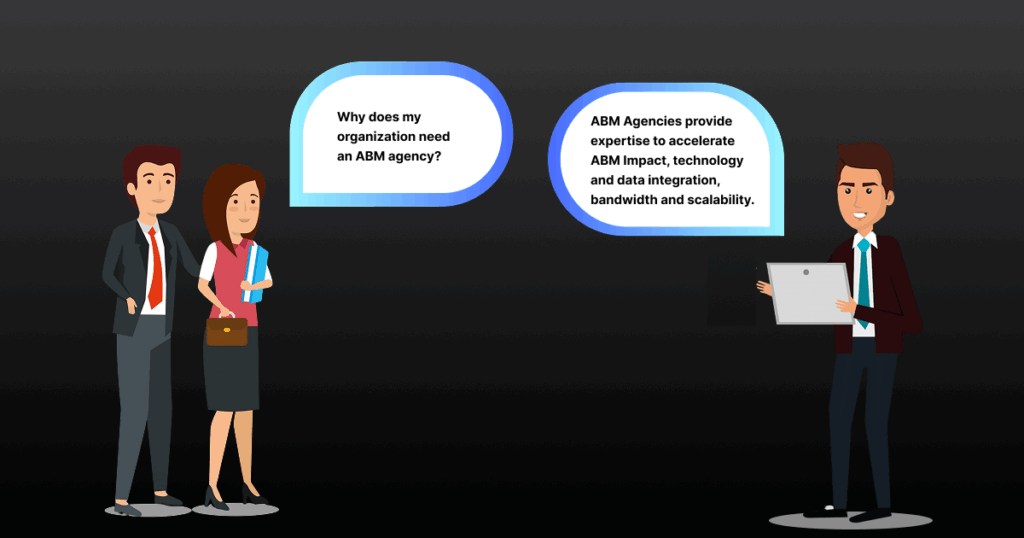
Many organizations housing seasoned marketing teams also turn to an account-based marketing agency for three main reasons:
Expertise to accelerate ABM impact: Precision in account selection, messaging, and multi-channel orchestration is what is required in ABM. Proven frameworks and years of experience that ABM agencies bring will be an advantage to deploy and fast-track results.
Technology and data integration: A specialized B2B ABM marketing agency can easily manage complex tech stacks and data pipelines more effectively. Seamless integration and data-driven decision making is possible from day one by partnering with the right ABM agency.
Bandwidth and scalability: Agencies provide the frameworks, and operational depth needed when expanding ABM programs from initial pilot projects to full-scale global rollouts. Backed by an ABM agency, you can maintain consistent and quality execution across regions and channels.
What Are the Key Criteria for Selecting an ABM Agency?
Choosing the right ABM agency is a strategic decision. The following ABM agency selection criteria help you evaluate and compare agencies effectively
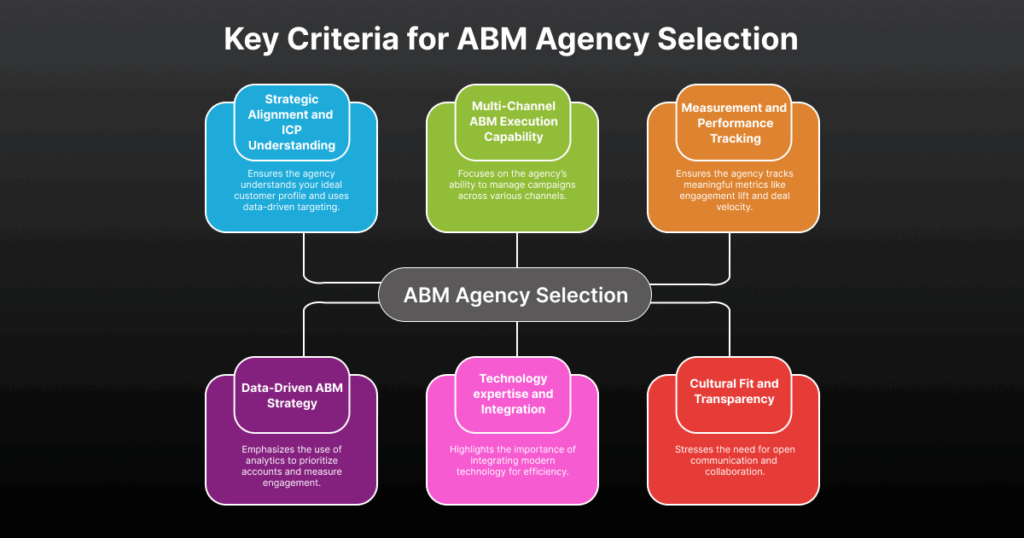
Strategic Alignment and ICP Understanding
An ABM agency must understand your ideal customer profile (ICP) and be capable of predictive account targeting. Avoid partners who rely on guesswork. Instead, look for an agency that uses data-driven methodologies for account selection modelling in ABM.
Ask them questions like “How do you define and validate ICPs? What data signals drive your predictive targeting?
Data-Driven ABM Strategy
A true data-driven ABM agency uses analytics to prioritize accounts, measure intent, and track engagement across touch points. Data should inform every decision right from content themes, strategy, to channel allocation.
Questions to Ask: “Which intent data sources do you leverage? How do you differentiate between high-intent and passive accounts?”
Multi-Channel ABM Execution Capability
ABM delivers results and becomes a success when channels work together. The agency should be able to manage multi-channel ABM campaigns integrating eMail, LinkedIn, content syndication, and display ads seamlessly.
Simply ask whether the agency can orchestrate a single narrative across digital and offline channels.
Technology Expertise and Integration
Technology integration is key for both efficiency and performance. The ideal agency must be proficient with modern ABM agency technology stack, such as CRM, automation, and analytics, to ensure seamless integration across tools.
Confirm which CRM and automation the agency integrated most recently.
Measurement and Performance Tracking
Success must be measurable with tangible results. Avoid focus on vanity metrics like clicks and impressions. Ensure the agency tracks ABM agency performance metrics such as engagement lift, influenced pipeline, and deal velocity.
Sales and Marketing Alignment
Keep in mind that top agencies build systems and processes for ABM sales and marketing alignment by synchronizing outreach, feedback loops, and reporting.
Cultural Fit and Transparency
Finally, remember that partnerships succeed only when they are built on strong collaboration. Evaluate how open, responsive, and transparent the agency is with regard to communication and approach.
How to Evaluate ABM Agencies for B2B SaaS Marketing?
Long buying cycles, multiple stakeholders, and a recurring revenue model are a few unique ABM challenges of SaaS companies. When assessing an ABM agency for B2B SaaS marketing, focus on:
Understanding of the SaaS buyer Journey
The agency should clearly understand the full SaaS lifecycle, starting from demo requests to renewals and expansions. Accordingly, it should be able to tailor ABM programs for acquisition, upsell, and retention.
Experience with Product-Led Growth (PLG)
Most of the SaaS companies use freemium or trial models. The agency should be smart enough to identify and nurture accounts that start small but show strong engagement or buying intent, eventually turning trial users into paying customers.
Advanced Data Modelling and Scoring
Ask how the agency builds account selection models to identify and prioritize high-value accounts. Check whether they combine intent data with product usage or behavioral data to predict which accounts are more likely to convert.
Clear Attribution and ROI Tracking
Speed to pipeline is crucial in SaaS. A capable account-based marketing agency ties ABM campaigns to tangible outcomes like opportunity creation and sales velocity.
Agile Experimentation
SaaS growth definitely thrives on iteration. The agency should constantly test the messaging, creative, and channels, refining campaigns based on what actually resonates with your ICP segments.
ABM Technology Platform Integration: What to Expect in 2026?
Technology defines ABM maturity. In 2026, an agency’s ability to connect systems, analyze insights, and automate campaigns is just as important as creative execution. A modern ABM agency should operate within an AI-powered ecosystem that enables precision, personalization, and measurable outcomes.
Core Components of a Modern ABM Tech Stack
A capable ABM agency should be capable of managing the following key technology layers that connect data, insights, and execution for measurable growth. Your agency should demonstrate proficiency in an AI-powered ABM ecosystem:
AI-Enhanced CRM & Marketing Automation: Salesforce Einstein, HubSpot AI, Adobe Marketo Engage for predictive insights and workflow automation.
Intent & Predictive Data Tools: 6sense, Demandbase AI, Bombora for real-time account scoring and predictive targeting.
AI Content Engines: ChatGPT Enterprise, Jasper, Writer for scalable, personalized content creation.
Cross-Channel Automation Platforms: LinkedIn, OTT, display, voice, and conversational AI for seamless multi-channel orchestration.
Unified Intelligence Dashboards: Single-view dashboards combining marketing, sales, and revenue data for continuous optimization.
This integrated, AI-driven stack ensures ABM programs are personalized, measurable, and scalable, empowering agencies to deliver real business outcomes, not just engagement metrics.
Emerging ABM Trends for 2026
As ABM continues to evolve, the following emerging trends are shaping how agencies deliver precision, scale and measurable impact in the years ahead:
AI-powered personalization: Using AI for real-time intent tracking and hyper-personalized engagement across every buyer journey stage.
Data convergence: Combining first-party and third-party intent data to build a unified, intelligent view of target accounts.
ABM as a growth discipline: Evolving ABM into a company-wide strategy that drives aligned revenue growth.
Stakeholder-level personalization: Customizing messaging for each decision-maker within the buying committee.
Focus on true engagement: Measuring success through account engagement, deal velocity, and customer lifetime value—not vanity metrics.
Seamless sales and marketing alignment: Uniting teams with shared goals, data, and coordinated engagement strategies.
Data-driven content strategy: Creating tailored, insights-backed content that addresses each account’s specific needs and priorities.
When engaging with ABM agencies, evaluate how effectively they integrate AI, automation, and data systems while maintaining transparency, compliance, and ethical governance across every interaction.
Introducing the 2026 ABM Toolkit
To help you operationalize ABM in 2026, we’ve updated our ABM Toolkit. Every agency you evaluate should ideally demonstrate proficiency in using these AI-powered frameworks and templates:
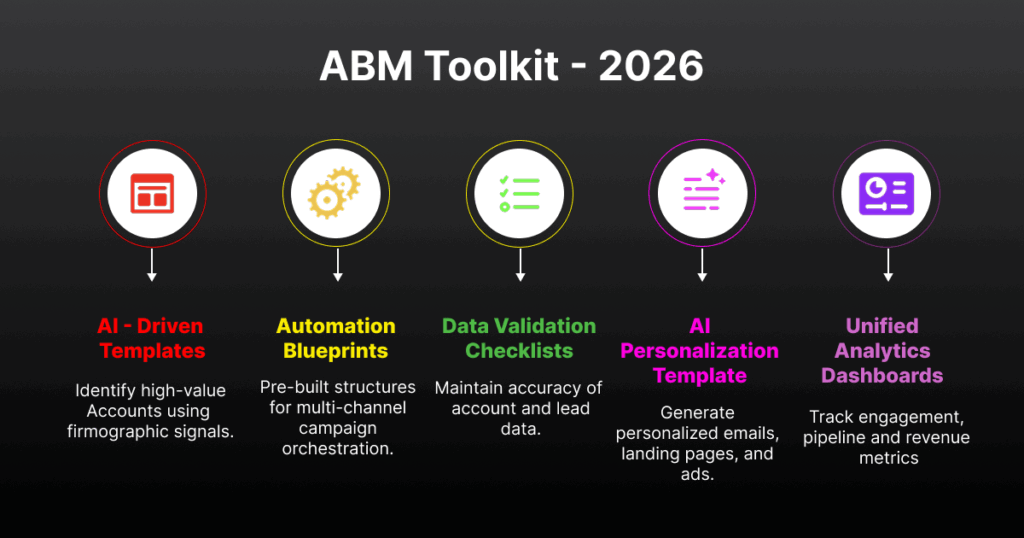
- AI-driven ICP Templates & Predictive Account Selection Frameworks: Quickly identify high-value accounts using firmographic, technographic, and intent-based signals.
- Automation Workflow Blueprints: Pre-built structures for multi-channel campaign orchestration, ensuring scalable and consistent execution.
- Data Validation & Enrichment Checklists: Maintain accuracy and completeness of account and lead data with AI-led verification.
- AI Personalization Templates for Content & Creative Execution: Tools and frameworks for generating hyper-personalized emails, landing pages, and ads at scale.
- Unified Analytics & Outcome Dashboards: Single-view reporting to track engagement, pipeline, and revenue metrics, connecting campaigns directly to business outcomes.
How to use the 2026 Toolkit:
When evaluating an ABM agency, check whether they actively leverage this toolkit to validate ICPs, personalize campaigns at scale, automate workflows, and link actions to measurable revenue outcomes. Agencies that integrate the toolkit effectively are best positioned to deliver the precision, speed, and impact expected from ABM in 2026.
The Step-by-Step Process for ABM Agency Evaluation
Adopt a structured approach outlined below while evaluating an agency without bias and ensure rigor in the assessment:
- Define your ABM maturity stage: Is your team exploring, piloting, or scaling ABM?
- Set measurable objectives: Increase pipeline from target accounts by 30% in two quarters (example).
- Create a selection committee: Include marketing, sales, operations, and IT leaders.
- Build an evaluation matrix: Map each agency against weighted criteria (strategy, data, tech, culture).
- Request a discovery workshop: Test chemistry and collaboration before signing.
- Check client references: Verify claims, results, and responsiveness.
- Run a pilot program: Validate methodology before full engagement.
- Finalise scope and SLAs: Define deliverables, review cadence, and data ownership clearly.
This disciplined evaluation protects your investment and sets a strong foundation for long-term success.
Key Metrics to Measure ABM Agency Success
Once onboarded, your ABM agency should align reporting with actual business outcomes. The most common ABM agency performance metrics include:
- Engaged Accounts: Check whether the agency can show the percentage of target accounts showing meaningful activity.
- Pipeline Contribution: Evaluate how effectively the agency evaluates the value of opportunities influenced by ABM efforts.
- Deal Velocity: Average time from first touch to closed-won.
- Account Penetration: Review how well the agency engages the multiple stakeholders through growth of contacts and interactions within key accounts.
- Account-Based ROI: Demand clarity on how the agency measures the ROI and ties ABM activities directly to pipeline and revenue.
- Customer Advocacy: Look for an agency that has a record of turning satisfied clients into brand advocates through case studies and referrals.
The agency that tracks all these metrics will be a decent fit to be your ABM partner.
Common Mistakes to Avoid When Choosing an ABM Agency
When choosing an ideal ABM agency, even experienced leaders can fall into the following traps:
Choosing brand over fit: Don’t blindly go with big names, as the biggest brand might not be the best match. Choose an agency that perfectly aligns with your business stage, sector, culture, and goals.
Ignoring technology compatibility: Using right tools is very important in ABM marketing outcomes as wrong ones can break the data flow and visibility. Hence, prefer an ABM agency that integrates well with your CRM, automation, and analytics stack.
Focusing on short-term goals: Be practical and understand that ABM success builds over time. Have a long-term vision and celebrate success through metrics like pipeline velocity and account engagement.
Ignoring communication and reporting styles: Poor collaboration stems from improper communication and reporting styles. Ensure the agency values transparency, proactiveness, and follows regular feedback loops.
Avoid these red flags to partner with the right ABM agency to save time, effort, and budget.
Your ABM Agency Selection Checklist (Quick Reference)
Before finalizing your ABM partner, ensure they can:
- Use AI-driven ICP models with firmographic, technographic, and intent data.
- Run multi-channel, dynamically orchestrated campaigns across traditional and emerging platforms.
- Integrate seamlessly with your CRM, automation, and AI content tools.
- Apply fresh, transparent intent data with predictive analytics for targeting.
- Deliver AI-powered personalization at scale across content and touchpoints.
- Automate campaigns and workflows to improve speed and efficiency.
- Align sales and marketing with shared dashboards and predictive insights.
- Report on outcome-based metrics like pipeline influence and deal velocity.
- Ensure scalability and consistency as your ABM programs expand.
If any agency meets all these requirements, you can partner with it for a productive collaboration.
Final Thoughts
In 2026, ABM is turning into a core driver of revenue transformation. Hence, you should stop considering it as a mere marketing experiment. The right ABM agency will help you operationalise this transformation more effectively and seamlessly through sharper targeting, deeper account insight, and measurable pipeline impact.
Take some time to find not just the agency that can do ABM, but the right growth partner that leverages AI, data, creativity, technology, and transparency to drive measurable pipeline and revenue outcomes.
Ready to Begin Your ABM Journey with the Right Agency?
If you’re exploring or struggling to find the right agency, the Smarketers can be the right fit for you. Our experts help you design a perfect evolution framework and build a roadmap tailored to your industry. Unlock your marketing potential with tailored ABM solutions from The Smarketers.

